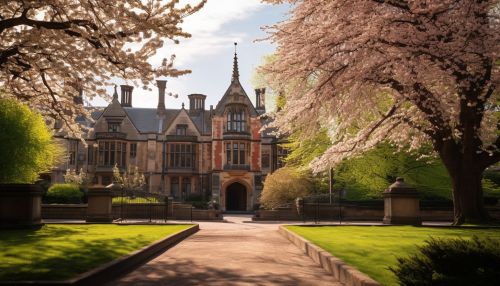Tim Berners-Lee
Early Life and Education
Sir Timothy John Berners-Lee was born on June 8, 1955, in London, England. His parents, Conway Berners-Lee and Mary Lee Woods, were both mathematicians and computer scientists who worked on the first commercially built computer, the Ferranti Mark I. Growing up in a household that valued technology and education, Berners-Lee developed an interest in computers at a young age.
He attended Sheen Mount Primary School before moving on to the independent Emanuel School in Wandsworth, London. After completing his secondary education, Berners-Lee enrolled at The Queen's College, Oxford University, where he received a first-class degree in physics in 1976.


Career and Inventions
After graduating from Oxford, Berners-Lee began his career in the technology industry. He worked at Plessey Telecommunications Ltd and D.G Nash Ltd, where he gained experience in distributed transaction systems, message relays, and bar code technology.
In 1980, while working as an independent contractor at European Organization for Nuclear Research (CERN), Berners-Lee proposed a project based on the concept of hypertext, to facilitate sharing and updating information among researchers. This led to the creation of a prototype system named ENQUIRE.
In 1989, Berners-Lee made a proposal that would ultimately lead to the creation of the World Wide Web (WWW). He envisioned a global network that would allow researchers to share information seamlessly. By Christmas 1990, Berners-Lee had built all the tools necessary for the Web: the first web browser (named WorldWideWeb and later renamed Nexus), the first web server, and the first web pages.
Contribution to the World Wide Web
Berners-Lee's invention of the World Wide Web revolutionized the way people access and share information. The Web, as it is commonly known, is a system of interlinked hypertext documents accessed through the Internet. With a web browser, a user can view web pages that may contain text, images, videos, and other multimedia and navigate between them using hyperlinks.
In 1991, Berners-Lee introduced the Web to the public. Unlike proprietary systems that were prevalent at the time, Berners-Lee made the WWW freely available to the public. This decision played a significant role in the rapid growth and adoption of the Web.
In 1994, Berners-Lee founded the World Wide Web Consortium (W3C), an international community dedicated to developing open standards to ensure the long-term growth of the Web. He has since served as the director of this organization.
Later Career and Current Work
In 2001, Berners-Lee became a fellow of the Royal Society of London, one of the oldest scientific societies in the world. In 2004, he was knighted by Queen Elizabeth II for his pioneering work.
In 2006, Berners-Lee accepted a professorship at the Massachusetts Institute of Technology's (MIT) Computer Science and Artificial Intelligence Laboratory. He also holds a professorship at the University of Oxford.
Berners-Lee continues to advocate for an open, accessible Web. He is a proponent of net neutrality, and in 2009, he launched the World Wide Web Foundation, which seeks to establish the Web as a human right and ensure that everyone can access and use it freely.
Legacy and Impact
Berners-Lee's invention of the World Wide Web has had a profound impact on society. It has transformed the way people communicate, access information, conduct business, and more. His decision to make the Web an open, freely accessible platform has been instrumental in its growth and ubiquity.
Despite the Web's widespread use, Berners-Lee has expressed concern about its future. He has spoken out about issues such as privacy, censorship, and the digital divide, and he continues to advocate for a free and open Web.
